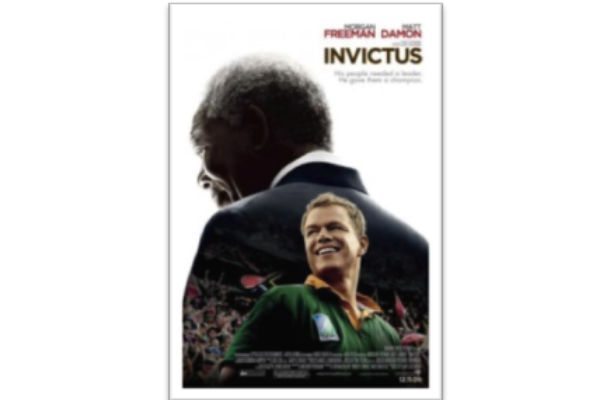The name of the movie Invictus is inspired by a poem written by William Ernest Henley. Nelson Mandela famously shared that this was the one poem that gave him strength and clarity during his years of incarceration at Robben Island.
“I am the master of my fate:I am the captain of my soul.”
These lines not only reflect the spirit of the film but also capture the essence of what true leadership and team building look like — especially in the face of adversity.
Related Read: 10 Inspirational Movies To Watch
Why We Keep Coming Back to This Film
Table of Contents
At FocusU, we often turn to movies like Invictus in our team-building and leadership workshops — not as entertainment, but as conversation starters. Over the years, we’ve noticed something powerful: real stories, when thoughtfully explored, create deep reflections.
Invictus tells the true story of how Nelson Mandela, newly elected as President of South Africa, teamed up with the captain of the nation’s rugby team, Francois Pienaar, to unite a country still reeling from the effects of apartheid. Believing in the unifying power of sport, Mandela puts his faith in the Springboks, a team traditionally associated with the white minority, and rallies the nation around their 1995 Rugby World Cup campaign.
It’s not just a sports story. It’s a story of vision, resilience, empathy, and belief.
Related Read: 10 Lessons from The Movie Mission Mangal
Key Takeaways for Teams and Leaders
1. Empathy is the Foundation of Trust
Mandela’s decision to support the Springboks wasn’t universally popular. For many Black South Africans, the team was a symbol of apartheid. But Mandela understood something many leaders overlook: healing and unity require uncomfortable empathy.
In our experience working with leadership teams, we’ve found that when a leader chooses to understand the “other side,” even at personal cost, trust begins to build. Team alignment follows trust— not the other way around.
Related Read: Leaders Eat Last: Building Trust and Empathy for High-Performing Teams
2. Symbolism Matters in Team Building
One of the most powerful scenes in the movie is when Mandela dons the Springboks jersey in front of a packed stadium. It’s not just symbolic — it’s transformational.
We’ve seen organizations go through cultural transitions where small acts of symbolic leadership — participating in grassroots projects, acknowledging previously ignored voices, or reshaping physical spaces — help shift mindsets faster than policy ever could.
Leaders underestimate the power of symbols. But teams remember them.
Related Read: 5 Reasons Why Leaders Look For Team Building Activities That Are Impactful
3. You Don’t Always Need Formal Power to Lead
Francois Pienaar is not told what to do — he’s inspired. Mandela doesn’t issue mandates; he asks questions. He shares a vision so compelling that others want to be a part of it.
In our sessions, we’ve often discussed the difference between positional authority and inspirational influence. Great team cultures are built when people choose to lead from wherever they stand.
4. Clarity of Purpose Aligns Action
Mandela had a simple goal: unify the nation. Everything else was a means to that end. Clarity like this removes distractions. It gives teams a shared direction — even if they’re coming from different starting points.
In our workshops, we’ve noticed that teams perform better when the “why” is clear. Whether it’s a marketing team or a project delivery unit, clarity of purpose leads to aligned priorities, better collaboration, and higher morale.
5. The Power of Belief
There’s a pivotal moment when Mandela tells Pienaar, “I believe we can do it.” No tactical strategy. Just belief.
We’ve often seen teams rise to challenges simply because someone believed in them first. Leaders who communicate belief — authentically and consistently — create emotionally safe environments where people stretch beyond what they thought was possible.
Belief isn’t fluffy. It’s the fuel for performance.
Related Read: The Power of Belief
How You Can Use This Film in a Corporate Setting
Watch it with your team: Make it part of an offsite, a team bonding session, or a values-based leadership series.
Have a structured debrief: Use guiding questions like “What leadership behaviors stood out to you?”, “What parallels can you draw with our current team dynamic?”, or “What does belief mean in our context?”
Use scenes as reflection points: Many moments from the film can be integrated into learning journeys—especially those centered on resilience, leading through crisis, and inclusive leadership.
We’ve done this with clients across industries, and the feedback is consistent: when you pair a great story with thoughtful dialogue, people engage. They open up. They reflect.
Final Thoughts
Invictus reminds us that team building is not about surface-level activities. It’s about purpose, trust, empathy, and belief. It’s about how leaders show up in small moments — and how those moments shape culture.
If you’re an HR professional, an L&D leader, or a manager looking to bring your team closer together, start here. Watch the film. Reflect. Ask the tough questions.
And as Mandela reminds us through Henley’s poem:
“It matters not how strait the gate,How charged with punishments the scroll,I am the master of my fate:I am the captain of my soul.”
Because in the end, great teams are not built by chance. They’re shaped by choice.
Related Read:The Secret to Great Teams? Understanding Each Other





